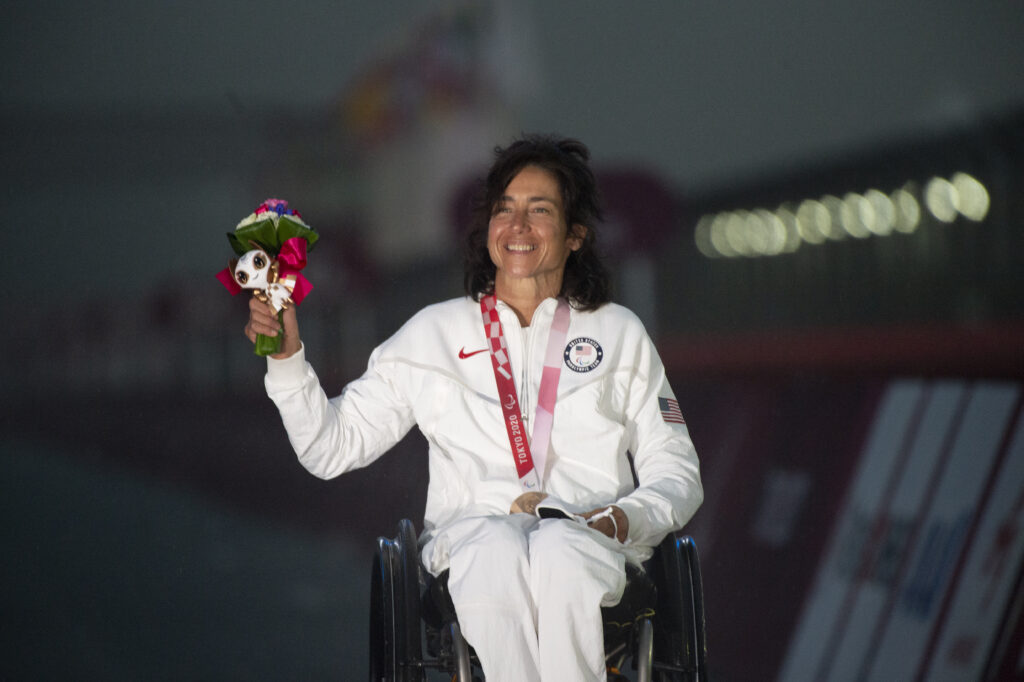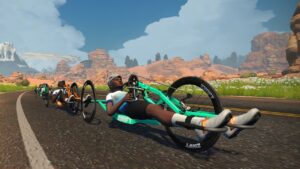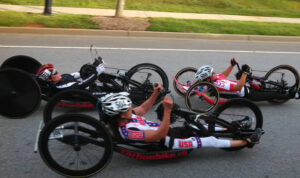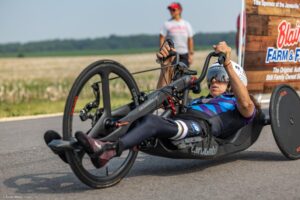I’m not there. It feels strange. After 12 years of handcycling competition with Team USA, including 3 Paralympic Games (London 2012, Rio 2016, and Tokyo 2020) I am – unofficially – retired. It’s been an incredible experience, but my body needs rest and repair, and I’m happy to “pass the torch” to the younger, hungrier handcyclists and would-be Paralympians.
As Team USA gets ready to compete in Paris, I am excited for the roster of handcyclists representing: Travis Gaertner (H4), Matt Tingley (H4), Cody Wills (H2), Brandon Lyons (H3), Kate Brim (WH2) and Oksana Masters (WH5). Each of them stands a good chance at the top 10 on the results list, if not the podium. Three events will take place in Clichy-Sous-Bois, for the Paracycling Road discipline in early September: a 13.9 km Time Trial (Sept 4), a Road Race (Sept 5), and the Team Relay (Sept 7th). Kate Brim and Oksana Masters are guaranteed gold medal finishes (barring catastrophe) in both the Time Trial and Road Race. Cody Wills has a good shot at the podium in his events, though it will be close. Tougher to predict are Travis, Matt, and Brandon – their field of competitors is much larger, and though Brandon has finished on the podium before in international competition because the time margins are so tight he could also end up further down. The Team Relay will be particularly exciting: the 2024 season has seen a mix of athletes on this relay team throughout the 3 World Cups, culminating in a very strong (and winning) combination of Matt Tingley, Kate Brim, and Travis Gaertner. Their chances of winning gold in Paris are very good indeed, though expect France, Spain, and Italy to give them a good fight.
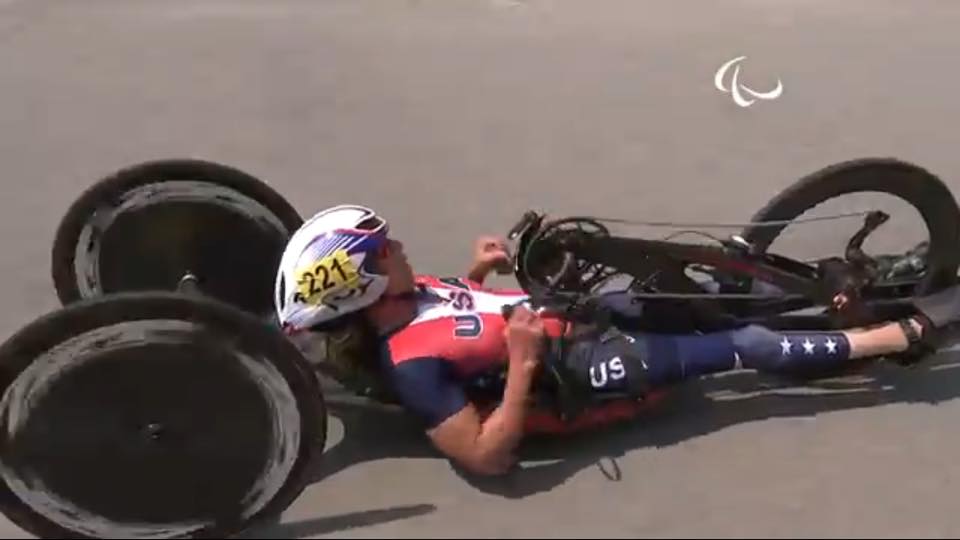
These athletes have all worked long and hard for their chance to represent the USA on the most elevated stage in the Paracycling calendar. I know, because of my own recently paused career of over a decade. Of course, Paracycling can be a complicated sport due to the inherent messiness of Classification – putting athletes in the correct category based on their disability. As you might expect, it is not an exact science and leads to much controversy among athletes and teams. Another complicating factor is the huge discrepancy in athlete representation across categories: Kate Brim’s class, WH2, had one solo participant at the international level for the decade or so prior to Kate’s entry into the sport. Now there are 3 or 4 total – not much, and so therefore not very competitive. Similarly, Oksana Masters’ category has a mere 6 participants. Not to diminish their achievements (and they are both great athletes), but neither of them have any significant competition. Still, the fact that they are there, representing, inspiring, and showing what is possible can only help to grow the sport of female handcycling moving forward. Contrast the Women’s H2 and H5 fields (Women’s H3 and H4 are 15-20 deep) to the 30+ racers in Men’s H4, and 50+ in Men’s H3, and it becomes clear that our men have a higher bar to reach the podium. Within the Men’s H4 and H3 categories in particular, classification arguments are almost constantly brewing, where certain athletes who were previously confirmed in a higher (less disabled) category have somehow found their way to being reclassified to a lower (more disabled) category, and have consistently taken the top step of the podium as a result. When you have trained incredibly hard and made personal sacrifices to be the very best that you can be in your sport, to have this sort of “classification doping” take place is truly maddening. It’s a testament, however, to the way this sport can put its hooks into you that despite this messiness (at best) and outright injustice (at worst) our top handcyclists keep digging deep, coming back, and giving their all to the sport that they love.
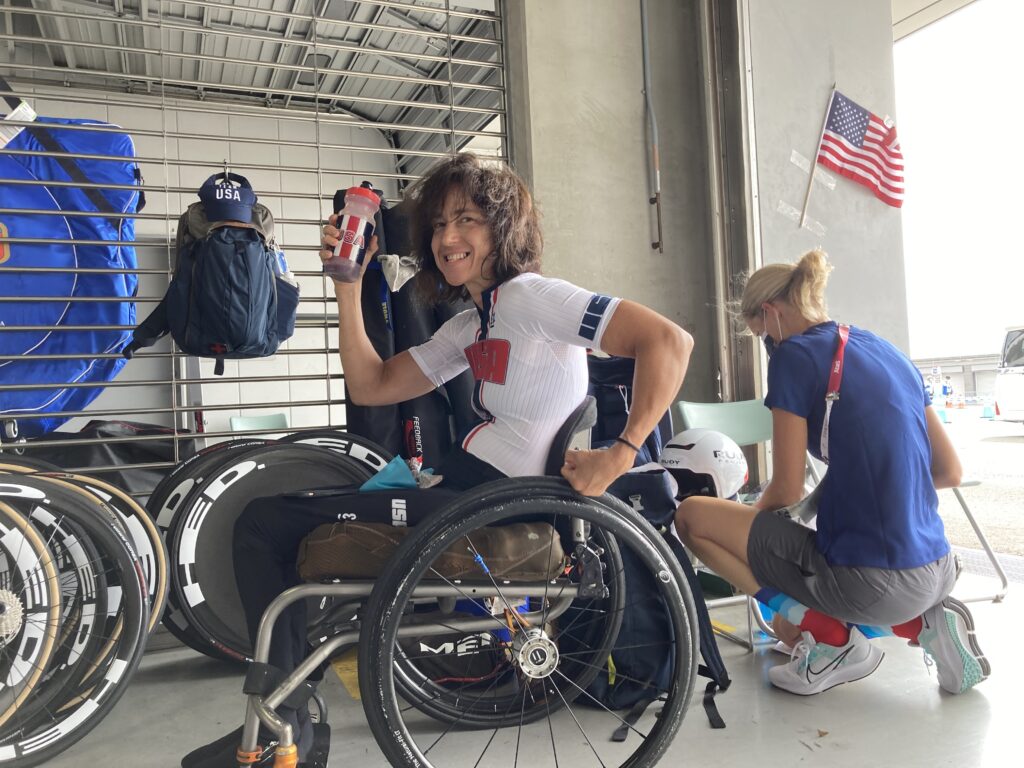
For myself, I will miss the thrill of competition on the world stage. My career as a hand cyclist has given me an incredible experience of growth, on all levels, and has shown me that I am capable of far more than I ever imagined was possible. And it never would have been possible if not for a whole sequence of events, people, and organizations… a structure that exists for us adaptive athletes – Paralympic sport. Of course, It started with getting my first handcycle,and riding it. A lot. The experience of getting stronger, having more endurance, feeling more powerful and alive generated momentum, and I just kept going. Persistence paid off, I had a successful career. I am so grateful that the sport of Paracycling exists. Let’s cheer on our Team USA athletes in Paris!! You can watch the Paralympic Games on NBC and Peacock, though it’s likely that not all events will be broadcast. Another good bet is the Paralympic YouTube channel:
https://www.youtube.com/@paralympics. Go Team!!

